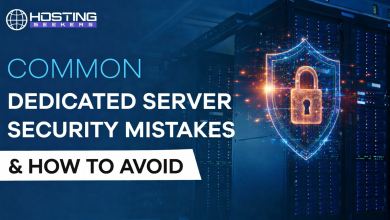
I’ve been working in cybersecurity for over a decade, and I can tell you this: the rules have completely changed. We used to focus almost entirely on building stronger defenses—better firewalls, more sophisticated antivirus, and comprehensive employee training. The idea was simple: keep the bad guys out, and you’ll be safe.
But that approach isn’t working anymore.
Today’s threat landscape demands a fundamental shift in how we think about security. And honestly, it’s no longer about whether your organization will face a cyber attack—it’s about how quickly you can respond when it happens. The numbers tell a sobering story: companies take an average of 277 days to identify and contain a data breach, while skilled attackers can compromise your systems and steal your data in just hours.
This timing gap has become the critical factor that separates organizations that survive cyber incidents from those that don’t.
So Who Are We Up Against, Exactly?
Look, the attackers we’re dealing with today aren’t lone hackers working from their basements. These are sophisticated, well-funded operations that approach cybercrime like a business—with dedicated teams, project managers, and probably better IT infrastructure than your company has. Advanced Persistent Threat groups—think of them as highly funded hacking teams, often backed by nation-states—use zero-day exploits (vulnerabilities that security vendors don’t even know exist yet) combined with AI-powered tools that can slip past traditional security measures.
Ransomware operators have totally changed the game. Some groups can encrypt your entire network in under four hours (which is terrifying, by the way) once they gain initial access, others prefer the slow approach, quietly copying your sensitive data over months while your systems appear to function normally, and some do both just to maximize their leverage.
What makes this even more challenging is how our work environments have evolved. Your teams probably communicate through multiple platforms daily—WhatsApp for quick updates, Slack for project coordination, maybe Telegram for certain conversations. Each platform handles data privacy differently, and most organizations have limited visibility into what’s being shared where.
Plus, the ongoing WhatsApp vs Telegram security debate isn’t just academic. These platforms have fundamentally different approaches to encryption and data handling, and those differences can have serious implications for your business risk.
Why Isn’t Prevention Working Anymore?
For decades, cybersecurity was built on this one big assumption: perfect prevention was possible. Build high enough walls, deploy the right tools, train your people properly—and you could keep everyone out.
Except that was never realistic, was it? Here’s what I’ve learned after watching countless breaches: even the most security-conscious organizations get hit, even companies with massive security budgets and dedicated teams, even the security companies themselves—they all fall victim to sophisticated attacks at some point.
The National Institute of Standards and Technology finally woke up to this reality when they updated their Cybersecurity Framework. Now they emphasize “Respond” and “Recover” functions just as much as traditional “Protect” measures. They’re basically admitting what security professionals have known for years—you can’t prevent everything, so you better be really good at responding when something slips through.
This changes how we think about success. It changes everything about how we think about success. Your security operations center can’t just focus on blocking threats anymore—now we’re measuring effectiveness by how quickly you detect problems and how fast you can shut them down.
Those response times? They can literally mean the difference between a manageable incident and a company-ending disaster.
What Happens When You’re Too Slow?
Every minute you’re slow to respond to a cyber incident, the damage gets worse. And I’m not just talking about a linear increase—it multiplies. Organizations that contain breaches within 30 days save an average of $1.76 million compared to those that fumble around for three months trying to figure out what happened.
But honestly? The financial hit is just the tip of the iceberg. The real cost goes so much deeper. Your reputation takes a beating that can last for years—and in my experience, that reputational damage is often the hardest thing to recover from. Customer trust evaporates, rebuilding that trust costs a fortune and takes forever, regulatory agencies start circling with their clipboards and penalty calculators.
There’s this moment when you realize a breach is real and you’re not ready for it. It’s a stomach-dropping feeling I wouldn’t wish on anyone.
Think about how much your business depends on cloud storage and chat platforms now. Your teams are collaborating through dozens of different tools, each with its own security quirks and compliance headaches. Group chat risks pile up when you don’t have proper oversight of what’s being shared in these channels—one wrong file attachment or copy-paste mistake in the wrong conversation, and suddenly you’re explaining to lawyers how customer data ended up where it shouldn’t be.
How Do You Actually Prepare for This?
Effective incident response has to be built before anything bad happens. You can’t figure out your evacuation plan when the building is already on fire, right?
You need plans that cover different attack scenarios, clear communication protocols, and everyone needs to know exactly what their job is when things go sideways. But having a plan sitting in a binder somewhere doesn’t mean much if nobody’s actually practiced it. When was the last time a real crisis went exactly according to the manual?
You need tabletop exercises, simulated attacks, regular drills. Test your procedures when everyone’s calm and thinking clearly, not when you’re under pressure from an actual incident.
Now, let’s talk about the technical side—you need monitoring that actually covers your entire environment. Security Information and Event Management systems collect and analyze data from everywhere in your network, think of them as your security nerve center. Extended Detection and Response platforms give you broader visibility and help coordinate your response across multiple attack vectors. User and Entity Behavior Analytics tools watch for weird patterns that might signal trouble.
But here’s the catch: all these fancy tools are only as good as the people running them. You need skilled analysts who can make sense of alerts, dig into suspicious activity, and make critical decisions when the pressure’s on.
A lot of smart organizations are setting up an incident response retainer service with specialized cybersecurity firms. Think of it like having elite firefighters on standby—when something major happens, you get immediate access to people who’ve seen it all before and know exactly how to handle it.
Why Is Communication Security So Complicated?
Business communication security goes way beyond whether your messages are encrypted or not. There’s this thing called metadata—basically information about who’s talking to whom, when, and how often—that can reveal organizational charts, project timelines, and strategic priorities even when the actual message content is locked down tight.
It’s like someone reading your diary by just looking at the chapter titles. They might not know what you wrote, but they can figure out a lot about what’s going on in your life.
Encrypted messaging and business compliance don’t always play nice together, especially in regulated industries. End-to-end encryption is great for security, but it can mess with requirements around data retention, legal discovery, and audit trails. You’re constantly trying to balance protecting your communications with meeting regulatory demands, and honestly, there’s no perfect solution.
Healthcare companies have to worry about HIPAA requirements, financial services deal with SEC regulations, government contractors face even more restrictions. Each industry has its own maze of rules about what communication tools you can use and how you can implement them.
Can You Really Do This Without Help?
Look, I’ll be straight with you: most companies simply don’t have the internal resources to handle sophisticated cyber attacks effectively. The threats are too complex, they evolve too fast, and the stakes are way too high to wing it with whatever team you happen to have on payroll.
Strategic partnerships with managed security providers, incident response specialists, and threat intelligence firms can completely change your response game. These partnerships give you access to specialized expertise, advanced tools, and round-the-clock monitoring that would cost a fortune to build internally.
More importantly, they offer immediate backup when your internal team gets overwhelmed—because trust me, when you’re dealing with a major incident, having expert help available can make all the difference between containing the damage and watching it spiral completely out of control.
The trick is setting up these relationships before you need them. Work out the service agreements, test the escalation procedures, run joint exercises. You want these partnerships battle-tested and ready to go, not something you’re trying to figure out while your systems are on fire.
How Do You Know If It’s Actually Working?
Response effectiveness isn’t just about speed—it’s about coordinated, intelligent action under pressure. You need clear metrics for detection accuracy, response coordination quality, and recovery time objectives.
Regular assessment and improvement should include updating procedures based on lessons learned from actual incidents, changes in the threat landscape, and evolution in your business operations. Document everything. Analyze every incident, even the minor ones. Each event provides insights that can strengthen your future response capabilities and reduce the likelihood of similar problems causing significant damage.
Where Do We Go From Here?
The shift toward response-centric security isn’t just a trend. It’s the new reality. Organizations that accept this truth and invest accordingly in rapid detection and response capabilities will maintain significant competitive advantages through superior operational resilience.
Success requires coordinated investment in technology, skilled personnel, proven processes, and strategic partnerships. While the cybersecurity landscape continues evolving rapidly, organizations with robust response capabilities will be much better positioned to minimize business impact and maintain stakeholder confidence when incidents occur.
We need to stop asking whether our organizations will face major cyber incidents. The question isn’t whether your organization will experience a significant cyber incident, but how quickly and effectively you can respond when it happens.






